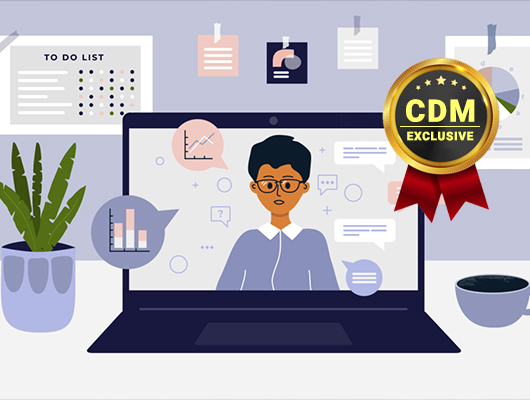The business world has changed and managing your endpoints is more important than ever
By Jay Goodman, Strategic Product Marketing Manager, Automox
The business world has changed and many of the resulting adjustments, like remote work, are here to stay. Keeping your teams healthy and safe during this period is a top priority, as is making sure their remote endpoints are managed and secure. But with these changes come a list of concerns and issues that many organizations just are not ready to address, sometimes highlighting legacy support policies and even out-of-standard technological needs.
According to a 2018 survey, 90 percent of IT professionals believe their remote workforce poses a security risk, and 36 percent reported that a remote employee was the cause of a security incident. Two years later, as we’ve all been forced into remote work situations, the friction of everyday management of the full enterprise has increased, putting a strain on the IT and support staff as well as the users.
So how can we address common areas of friction in endpoint management as well as ways to identify pain points in an environment?
For starters, we must move beyond the friction that exists in legacy infrastructures.
The Remote Architecture
Why do we need heightened awareness during this new normal? Simply put, the legacy remote architecture was never designed for these problems and realities. Remote work used to be accommodation, rather than a permanent situation.
Endpoints within the traditional confines of the office were easily protected between firewalls and gateways, and easy to access for IT teams to carry out general maintenance such as software support, patch management, and enforcing IT policies. When those critical systems move beyond the office walls, things get complicated as general visibility is lost. Layers of access control and security are established for a reason, but they were not designed for a remote company.
Embracing a Modern Approach
Alongside digital transformation comes pressure on IT teams to keep pace with the rapid speed of business. However, legacy patching tools are particularly prone to shortcomings for supporting remote workers, leading to potentially poor experiences for end-users or something even worse, like the acceptance of having a vulnerable attack surface.
Endpoint device management tools are a core part of protecting an increasingly remote workforce. IT admins require reliable remote access to endpoints and devices in order to maintain and patch while minimizing user disruption. Your IT strategy should be investing in this area to thrive in the new normal.
Good Cyber Hygiene is a Must
Cyber hygiene for remote work requires IT staff to have a detailed inventory of their endpoint security, as well as full visibility over the patch status of those endpoints. Remote devices need to be secured against threats, just like an organization’s equipment that is located within a company office. An unpatched endpoint is a cybersecurity risk, no matter where it is located.
Every one of us has had to adapt to this environment within the past seven months, and while it’s presented significant challenges to almost every business, it has also provided an opportunity for organizations to recognize the benefits of applying more efficient and secure ways to operate.
Fortunately, we have new solutions and technologies that can help organizations get a jump start to modernize their systems in order to seamlessly go remote and stay protected. Endpoint management tools provide a management interface to simplify or automate deployment, patching, and configuration management of managed devices – which reduces the burden on IT operations – especially during this unclear time of remote work.
The global COVID-19 pandemic will not be the last business-disrupting event to occur, so it’s important to start implementing the right tools for the future of work now. Organizations need to react to these scenarios in a way that ensures an outcome where they come out stronger and more resilient each time. Rather than putting reactionary band aids on problems, make the investments that show you’re planning towards the future, and that future is one that seamlessly supports remote and hybrid work models.
About the Author
 Jay Goodman is the Strategic Product Marketing Manager of Automox. He is a product marketing expert and intelligence consultant with experience working with Fortune 500 companies and startups alike. Jay joined Automox in 2019 and is responsible for the messaging and intelligence gathering functions within the company. Previously, Jay was a Product Manager for McAfee and an avid participant in the cybersecurity and competitive intelligence communities.
Jay Goodman is the Strategic Product Marketing Manager of Automox. He is a product marketing expert and intelligence consultant with experience working with Fortune 500 companies and startups alike. Jay joined Automox in 2019 and is responsible for the messaging and intelligence gathering functions within the company. Previously, Jay was a Product Manager for McAfee and an avid participant in the cybersecurity and competitive intelligence communities.
Jay can be reached online at ([email protected], @AutomoxApp, etc..) and at our company website https://www.automox.com/


